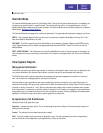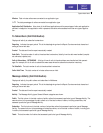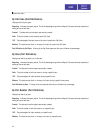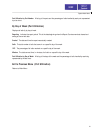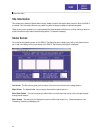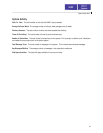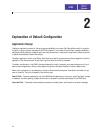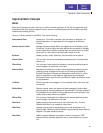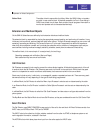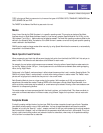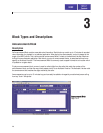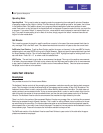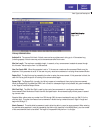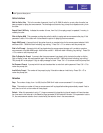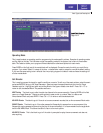
Station Block The station block is responsible for dialing. When the SVMi-8 dials or transfers
any calls it uses a station block. All devices accessible via Touch-Tone dialing in
SVMi-8 use at least one of these. Each contains the call progress information to
monitor and process calls to the associated device(s).
Extension and Mailbox Objects
On the SVMi-8 Subscribers are defined by both extension blocks and mailbox blocks.
The extension block is responsible for playing the appropriate personal greeting, and performing all transfers. It may
initiate any hold conditions, park and page and other caller options. Through the access manager you can control call
screening, forwarding and blocking, find me and follow me. It is the main component that callers will experience
when they dial an extension number and it provides the subscriber with a collection of management tools and per-
sonal services including workload manager, availability schedule, stored phone numbers and direct calling.
The mailbox block, is far more simple. It is used primarily for two things.
Recording messages and notification (Alert and Pager).
Each subscriber may have one or both blocks.
Call Directors
Call Directors are powerful tools used to connect the various blocks together. All blocks that pass control of the call
to another block use Call Directors. Call Directors pass control of the call to the next block. Which block they pass
control to is dependent on certain conditions called events, that have occurred within the current block.
Events may include no entry, invalid entry, no message left, operator requested and user exit. There are many possi-
ble events and they will vary depending on the type of block being programmed.
In a Menu Block, the Call Director is called the 'Menu Input Processor' and also acts on data entered by the caller.
In an Extension Block, the Call Director is called the 'Caller Options Processor' and also acts on data entered by the
caller.
In a Mode Block, the Call Director is called the 'Call Code Processor' and also acts on call type data received from the
phone system.
The Bye Block and the Station Block do not have Call Directors, as they are considered the end of a Call Control Path.
Event Pointers
The Call Director uses EVENT POINTERS to pass control of the call to the next block. All Event Pointers consist of an
INPUT value, an ACTION, a Block TYPE, and a TARGET.
The INPUT value is the collection of digits, whether received from the caller via DTMF, or telephone system or net-
work integration information, collected in the block.
The ACTION is that which takes place when input from the caller equals the INPUT value.
Explanation of Default Configuration
26



